Shadecloth Information
Shadecloth History - Australia
Shadecloth was developed over 30 years ago to provide protection from the harsh Australian climate. It offers unique and exciting solutions for your domestic, horticultural, commercial, industrial, sport, leisure and agriculture shading requirements. Shadecloth can control shade, temperature, reduces evaporation and minimises wind, hail and frost damage.
Originally shade fabric, like all fabrics in the outdoors, suffered from UV degradation. UV inhibitors are now added during the manufacture of shadecloth and all quality shadecloth now comes with a ten year UV degradation warranty thanks to this addition. Discount Shade only supplies shadecloth with a 10 year UV degradation warranty.
The majority of shadecloth is supplied in 2 standard widths:
1.83 metre (6 foot); or
3.66 metre (12 foot)
Shadecloth is manufactured to a variety of specifications suitable for domestic and commercial applications. Discount Shade sells shadecloth in both domestic and commercial grades.
Shadecloth Applications
Home and Domestic ideal for patios, courtyards, privacy screens, dog kennels, ferneries, caravan annexes, barbeque areas, carports, aviaries, pool covers and swimming pool shading.
Horticulture shadecloth coverings for indoor plant and shrub nurseries; hydroponics; vegetables; fruit and flowers. It is also suitable as a windbreak.
Commercial / Industrial as safety enclosures and protection around industrial sites and building construction, hail protection for car yards and glasshouses, privacy and visual landscaping for factory and office complexes.
Sport and Leisure wind sheltering for tennis courts, shading for restaurants, resorts and surrounds for bowling greens.
Agriculture cattle and livestock covers.
Shadecloth Commercial and Domestic
Shadecloth is extensively used in Australia across various industries including horticulture, agricultural netting, hoarding on construction sites and as a visual barrier on fencing. Particular types of shadecloth are also used as screening on scaffold as a safety barrier. Shadecloth is a cost effective way of creating a barrier to the sun to provide UV safe environments for people see UV Fast Facts below.
More recently shadecloth screens or shadesails have been widely used in schools, kindergartens, pools and playground areas to provide comfortable outdoor areas for people during the day. Shadecloth is also very popular around the home to cut down the heat, create visual barriers and create cool living areas.
When purchasing shadecloth it is important to select the correct type and grade of shadecloth for the specific application. For instance, if the intention is to protect people, a high grade of shadecloth should be used which has at least 90% UV block. In the horticultural industry it is important to match the correct grade of shadecloth to the crop being grown. The correct grade of cloth, for example 30-50% shadecloth may prevent the fruit for a vegetable crop from being scalded by the sun. If a grade of shade which is too high is used, it can limit the plants growth and slow ripening by decreasing photosynthesis.
Domestic shadecloth refers to shadecloth which has a tape-filler knitted into the fabric, often referred to as knitted HDPE Mono/Tape. This helps create a higher UV or block out. We call it domestic grade shade because it isnt designed for tensioning up over large structures (such as commercial greenhouses or shadesails). It still has excellent longevity (up to 15 Year Warranty). Our domestic shadecloth is available in 50%, 70% or 90% shade block.
Commercial shadecloth refers to our range of monofilament shadecloths knitted HDPE. What this means is that there is no tape-filler in the shadecloth. To get the density, the knit or weave needs to be tighter. Essentially, monofilament shadecloth is a bit like fishing line tightly knitted together. The tighter the knit the heavier, and stronger the cloth. Our heaviest monofilament cloth is our 80% Commercial Grade Shadecloth which has a 306 gsm (grams per square metre) weight. Compare that for example to a 30% grade monofilament cloth which only has a 90 gsm weight. Our commercial shadecloth is available in 30%, 50%, 70%, 80% or 95% shade block.

Shadecloth - Colours Available
30% Shade
(Black or Black)
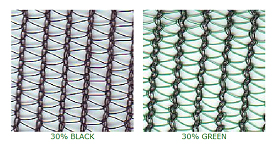
40% Fencemesh (Approx.)
(Green, Blue or Black)
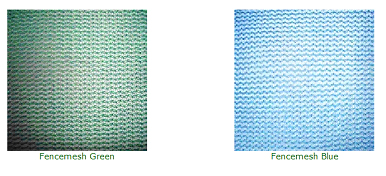
50% Shade
(Black, White or Green
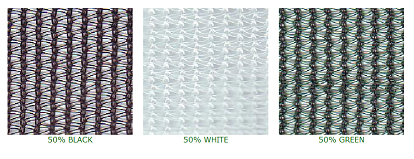
70% Shade
(Beige, Black, Blue, Green, White)
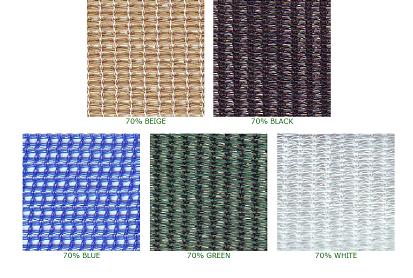
80% Shade
(Green or Black)
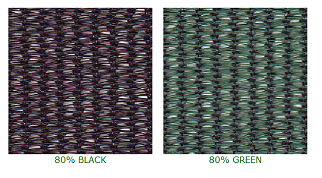
90% Shade
(Black, Dark Green, Light Charcoal, Light Green, Navy Blue, Sandstone or Terracotta)
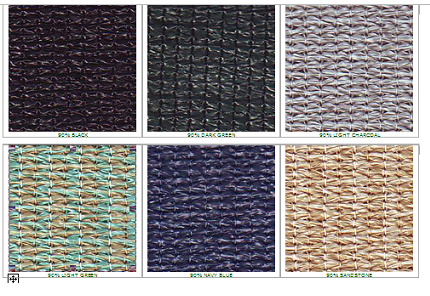
95% Shade
(Black, Bright Blue, Charcoal, Dark Green, Navy Blue, Sandstone, Terracotta)
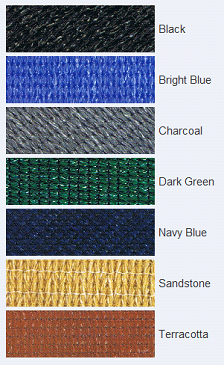
|
